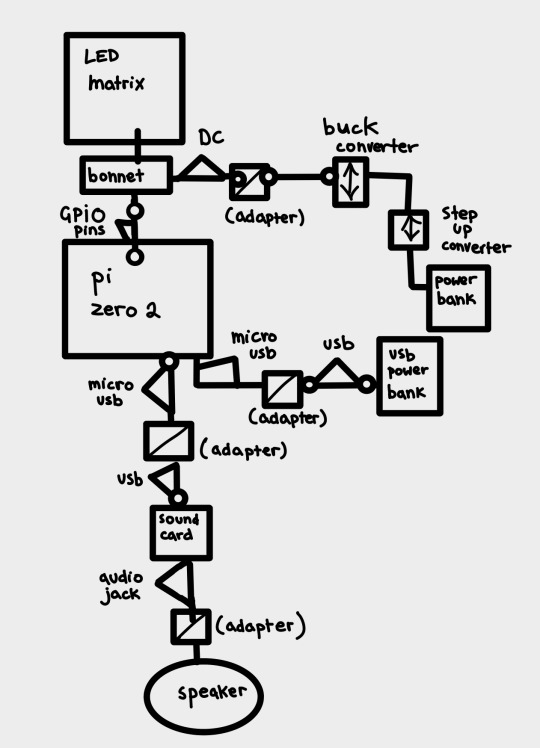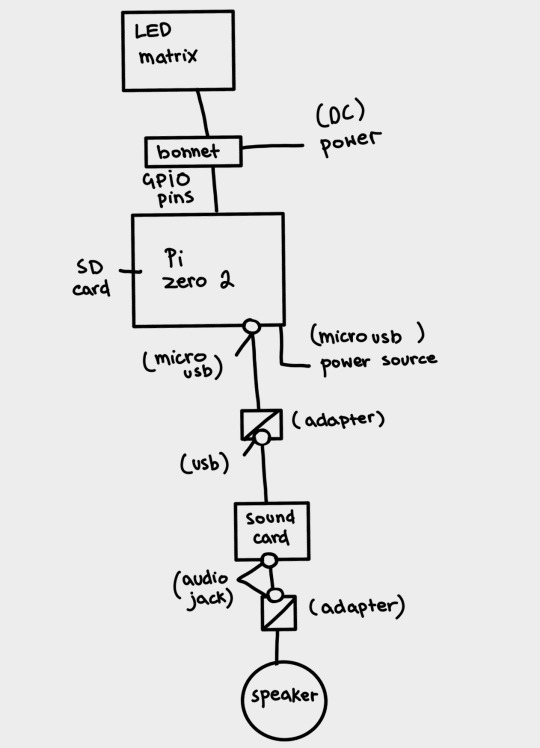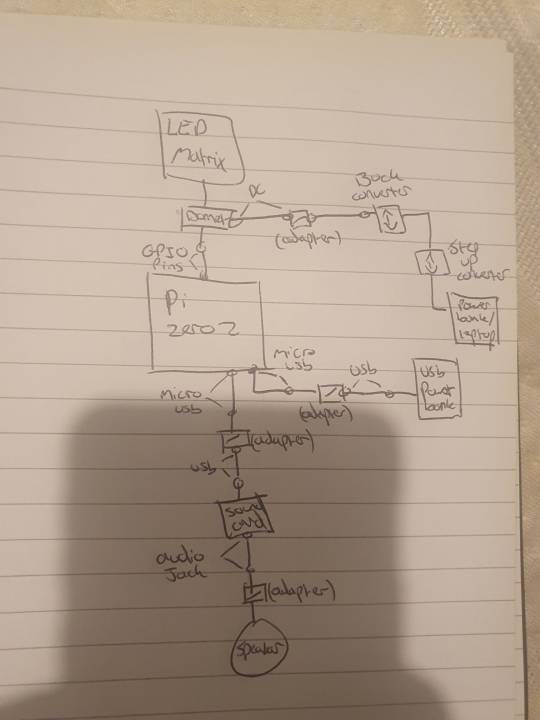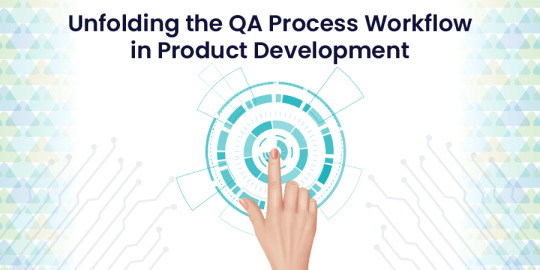#Roadmap software
Explore tagged Tumblr posts
Text
0 notes
Text
october 1st 2024: drafts!

preacher: i'm attaching slightly improved versions of our original drafts, but i'll also include mine and scott's garbage sketches under the cut because i think they're a little bit funny

(image id available through tumblr's accessibility options)
this is a slightly revised version of my original concept for "APRIL".
the main functionality i wanted for "APRIL" was for her to be able to read out words from the templeOS god word app, and ideally without needing keyboard input – hence the microphone. ideally all of her parts are going to fit inside a hollowed out mannequin or doll, which will probably just be the torso, so that she's more portable. for the same reason, i want her to run off a power bank – i want to be able to take her places!
if we manage, we're going to give her an animated LED face which moves to indicate when she's speaking. the way i first pitched it, i wanted it to also change a bit depending on how she "felt" – for example, frowning if the environment was hotter than ideal for the raspberry pi to operate on. but that's a bit beyond our current scope right now. i don't think we even ordered a thermostat.
scott drew the following wiring diagrams based off my original sketch. here revised digitally for readability's sake.


(image id available through the tumblr accessibility options although i fear it's not very good in this case. feedback appreciated).
scott: I decided to go with the raspberry pi zero 2w because it's what I've got experience coding on, it's relatively cheap for the "brains" of the operation (heh) and can perform both tasks from the godword prophecy generation, speaker operation and led matrix operation simultaneously. Plus its small enough to keep the circuit lightweight and fit inside the initial mannequin design.
This drawing fits no kind of engineering standard by the way lol. It was an initial sketch closer to a wiring diagram to see how it'd physically setup and wrap my head around transforming it from mains power to being theoretically portable and running on powerbanks. Unfortunately the LED matrix is really fucking power hungry so needs its own power supply of really specific voltage and current draws hence all the converters.
Also because Im using the smaller and cheaper pi, as oppossed to a stronger system like the pi4, it doesn't have any audio out jack so I plan to use the micro usb for audio out which means yet again I need another adapter for a soundcard and usb to micro usb adapters and all that jazz. Usually sound out can be done through the GPIO pins but the LED matrix takes so many pins that I cant really take anything form them so I had to look for other ways of doing it. Plus this way I get to add a soundcard so if we wanna add microphone support or anything later on we can :)
(Also this is all a little obtuse because I'm trying to do it as much as plug and play and screw terminal style as possible rather than actually solder connections for ease of access and initial setup, but this also works for modular design and component swapping later too so its cool.)
preacher: another reason we're going with plug&play is becauuseeeeee i don't own a soldering iron 😭 it's ok. it's ok.
our silly initial drafts under the cut for your viewing pleasure.



preacher: these were made around 2 weeks ago, so about september 15th ish.
as you can see the first "APRIL" drawing was beautifully drawn with my fat fingers in the facebook messenger photo editor. i think it holds up. lol.
#computers#computer#programming#software engineering#robots#robotics#raspberry pi#robot girl#machine#machines#divine machinery#tech#technology#techcore#machinecore#objectum#objectophilia#robophilia#techum#technum#android#gynoid#mechanical divinity#templeos#coding#scott#preacher#drafts#update#roadmap
30 notes
·
View notes
Text
#software development#app development#android app development#mobile application development#software development career#mobile app development career#software development engineer#game development#mobile app development community#mobile app development cost in bangladesh#software development roadmap#mobile app development#indie game development#mobile app development resources#development tools#enterprise company#inclusive and accessible hiring policies
1 note
·
View note
Text
From Chaos to Clarity: How Impact Mapping Drives Real Results
In today’s fast-moving world of product development, teams often struggle to connect their work with real business value. Impact Mapping drives real results by aligning efforts with strategic goals, ensuring teams focus on what truly matters rather than just delivering features. What is Impact Mapping and Why Does It Matter? Impact Mapping is a strategic planning technique that helps…
#agile#business goals#business impact#Collaboration#focus#Impact Mapping#lean startup#OKRs#outcome-driven#product development#product management#roadmap planning#software development#strategy
0 notes
Text
Is the Software Engineering Roadmap Essential for Aspiring Developers?
Embark on a structured journey through the evolving world of software engineering with our Software Engineering Roadmap. Designed to guide professionals at any stage of their career, this roadmap outlines key skills, cutting-edge technologies, and industry best practices. From foundational programming languages to advanced software architecture and agile methodologies, it provides a clear path for growth and specialization. Equip yourself with the knowledge and skills to thrive in the dynamic field of software engineering and stay competitive in the tech industry.
0 notes
Text

Our expert team can help you create a clear and actionable product development roadmap that aligns with your business goals. We specialize in agile development, ensuring your project stays on track and delivers results.
0 notes
Text
Master DevOps: Your Complete Guide and Roadmap | DevOps Online Training

Introduction to DevOps
In today's rapidly evolving technological landscape, the need for streamlined and efficient software development practices has never been greater. Enter DevOps—a culture, philosophy, and set of practices that bring development (Dev) and operations (Ops) together to improve collaboration, integration, and automation throughout the software development lifecycle. DevOps is not just a buzzword; it's a transformative approach that enables organizations to deliver high-quality software faster and more reliably. If you're looking to build a career in this field, DevOps Online Training is your gateway to mastering the skills required to excel in this domain.
What is DevOps?
DevOps is a combination of practices, tools, and cultural philosophies designed to increase an organization's ability to deliver applications and services at high velocity. By breaking down the traditional silos between development and operations teams, DevOps fosters a culture of collaboration, where both teams work together throughout the entire software development lifecycle. This collaboration leads to faster development, more frequent deployment of updates, and higher overall software quality.
At its core, DevOps emphasizes automation, continuous integration, continuous delivery (CI/CD), and monitoring. The goal is to minimize manual intervention, reduce errors, and improve the efficiency of software development and deployment. Through DevOps Online Training, you can learn how to implement these practices in real-world scenarios, making you an invaluable asset to any tech organization.
How DevOps Works
DevOps is built on a set of principles and practices that enable organizations to build, test, and deploy software rapidly and efficiently. Here's how DevOps works in practice:
1. Continuous Integration and Continuous Deployment (CI/CD)
Continuous Integration (CI) is the practice of merging code changes frequently, often multiple times a day, into a shared repository. Automated testing is then conducted to identify and resolve issues early in the development process. Continuous Deployment (CD) takes this a step further by automatically deploying code changes to production after passing the CI pipeline. Together, CI/CD reduces the time between writing code and delivering it to customers, ensuring that software updates are released frequently and reliably.
2. Automation
Automation is a critical component of DevOps. From building and testing code to deploying and monitoring applications, automation helps streamline the entire software development lifecycle. By automating repetitive tasks, teams can focus on more strategic activities, such as optimizing code and improving system performance. Automation tools like Jenkins, Ansible, and Puppet are commonly used in DevOps to create efficient, repeatable processes.
3. Infrastructure as Code (IaC)
Infrastructure as Code (IaC) is the practice of managing and provisioning computing infrastructure through machine-readable scripts rather than manual processes. This approach allows teams to automate the setup and configuration of environments, ensuring consistency across development, testing, and production stages. Tools like Terraform and AWS CloudFormation are popular choices for implementing IaC.
4. Monitoring and Logging
Effective monitoring and logging are essential to maintaining the health and performance of applications in a DevOps environment. By continuously monitoring systems and capturing logs, teams can identify and resolve issues before they impact end-users. Tools like Prometheus, Grafana, and ELK Stack are widely used for monitoring and logging in DevOps.
5. Collaboration and Communication
DevOps is as much about culture as it is about technology. A key aspect of DevOps is fostering a culture of collaboration and communication between development, operations, and other stakeholders. This collaboration ensures that everyone is aligned with the project's goals and that issues are addressed quickly. Tools like Slack, Microsoft Teams, and Jira facilitate communication and collaboration in a DevOps environment.
6. Security in DevOps (DevSecOps)
As security becomes increasingly important in software development, DevOps practices have evolved to include security as a core component. DevSecOps integrates security into every stage of the software development lifecycle, ensuring that security vulnerabilities are identified and addressed early in the process. By adopting DevSecOps practices, organizations can build more secure applications without compromising on speed and agility.
The Roadmap to Becoming a DevOps Engineer
Becoming a DevOps engineer requires a combination of technical skills, practical experience, and a deep understanding of DevOps principles. Here's a step-by-step roadmap to guide you on your journey:
1. Understand the Basics of DevOps
Before diving into specific tools and technologies, it's important to understand the fundamental principles of DevOps. Learn about the core concepts of CI/CD, automation, IaC, and monitoring. DevOps Online Training can provide you with a solid foundation in these areas, helping you grasp the essential elements of DevOps.
2. Gain Proficiency in Programming and Scripting
A strong foundation in programming and scripting is essential for a DevOps engineer. Start by learning a programming language like Python, Ruby, or Go, as well as scripting languages like Bash or PowerShell. These skills will enable you to automate tasks, write custom scripts, and work with various DevOps tools.
3. Master Version Control Systems
Version control systems (VCS) like Git are critical to DevOps practices. Learn how to use Git for version control, branching, and merging code. Understand how to collaborate with other developers using GitHub, GitLab, or Bitbucket. Version control is a fundamental skill that every DevOps engineer must possess.
4. Get Hands-On with CI/CD Tools
CI/CD is at the heart of DevOps, so gaining hands-on experience with CI/CD tools is crucial. Learn how to set up and configure Jenkins, CircleCI, or Travis CI to automate the build, test, and deployment processes. DevOps Online Training often includes practical labs and exercises that allow you to practice using these tools in real-world scenarios.
5. Learn About Infrastructure as Code (IaC)
IaC is a key practice in DevOps, enabling teams to manage and provision infrastructure programmatically. Familiarize yourself with IaC tools like Terraform, AWS CloudFormation, and Ansible. Learn how to write scripts that automate the creation and configuration of infrastructure, ensuring consistency across environments.
6. Develop Cloud Computing Skills
Cloud computing is an integral part of DevOps, as it provides the scalability and flexibility needed for modern software development. Gain proficiency in cloud platforms like AWS, Azure, or Google Cloud. Learn how to deploy applications to the cloud, manage cloud resources, and work with cloud-based DevOps tools.
7. Enhance Your Automation Skills
Automation is a cornerstone of DevOps, so it's essential to master automation tools and techniques. Learn how to automate tasks using tools like Jenkins, Puppet, and Chef. Understand how to create automated workflows that integrate with other DevOps tools and processes.
8. Learn About Monitoring and Logging
Effective monitoring and logging are crucial for maintaining the health of applications in a DevOps environment. Familiarize yourself with monitoring tools like Prometheus and Grafana, as well as logging tools like the ELK Stack. Learn how to set up monitoring dashboards, create alerts, and analyze logs to identify and resolve issues.
9. Embrace DevSecOps Practices
Security is a critical aspect of DevOps, and understanding DevSecOps practices is essential for a successful career in this field. Learn how to integrate security into the CI/CD pipeline, conduct security testing, and implement security best practices throughout the software development lifecycle.
10. Gain Practical Experience
Theory alone is not enough to become a proficient DevOps engineer. Hands-on experience is crucial. Work on real-world projects, contribute to open-source DevOps projects, or participate in internships. Practical experience will help you apply the skills you've learned and build a portfolio that showcases your expertise.
11. Obtain DevOps Certifications
Certifications can validate your skills and make you stand out in the job market. Consider obtaining certifications like AWS Certified DevOps Engineer, Google Cloud DevOps Engineer, or Microsoft Certified: Azure DevOps Engineer Expert. These certifications demonstrate your proficiency in DevOps practices and tools.
12. Stay Updated with Industry Trends
The field of DevOps is constantly evolving, with new tools and practices emerging regularly. Stay updated with industry trends by reading blogs, attending conferences, and participating in online communities. DevOps Online Training programs often include updates on the latest trends and tools in the industry.
13. Build a Strong Professional Network
Networking is important in any career, and DevOps is no exception. Join DevOps communities, attend meetups, and connect with other professionals in the field. Building a strong network can lead to job opportunities, collaborations, and valuable insights.
14. Prepare for DevOps Interviews
As you near the end of your learning journey, it's time to prepare for DevOps interviews. Practice common DevOps interview questions, participate in mock interviews, and review your projects and experiences. DevOps Online Training programs often include interview preparation sessions to help you succeed in landing your first DevOps job.
Conclusion
DevOps is a powerful approach that has revolutionized the way software is developed, tested, and deployed. By fostering collaboration between development and operations teams and leveraging automation, CI/CD, and cloud computing, DevOps enables organizations to deliver high-quality software at a rapid pace. Whether you're just starting your career or looking to transition into the field, DevOps Online Training can provide you with the skills and knowledge needed to succeed as a DevOps engineer.
By following the roadmap outlined in this article, you can develop the technical expertise, practical experience, and industry knowledge required to excel in DevOps. Remember to stay updated with the latest trends, build a strong network, and continuously improve your skills.
#devops#devopsonlinetraining#devops engineer#DevOps Roadmap#web development#development#software#Continuous Integration#Continuous Deployment#Cloud Computing#Automation#Software Development#IT Training#cicd#it training institute#it training courses#it training classes
0 notes
Text
HOW TO BECOME A SITECORE DEVELOPER IN 2024
Are you interested in becoming a Sitecore developer in 2024? Follow these essential steps to kickstart your career: 1) Learn the Basics:
C# and .NET: Sitecore is built on the .NET framework, so proficiency in C# and .NET is crucial.
CMS Fundamentals: Understand the core principles of content management systems, including content creation, management, and publishing. 2) Gain Sitecore Knowledge:
Official Documentation: Start with Sitecore's official documentation and tutorials.
Sitecore Academy: Enroll in Sitecore's online courses and certifications for formal training. 3) Hands-On Experience:
Practice Projects: Work on sample projects or contribute to open-source Sitecore projects.
Internships: Seek internships or junior developer positions for real-world experience. 4) Certifications:
Sitecore Certifications: Obtain Sitecore certifications to validate your skills and knowledge. 5) Join the Community:
Forums and User Groups: Engage with the Sitecore community through forums, user groups, and events.
Stay Updated: Keep up with the latest trends and updates in Sitecore development.
By following these steps, you'll be well on your way to becoming a skilled Sitecore developer, ready to take on the challenges and opportunities of 2024.
#sitecore#developer#sitecore developer#sitecore cms#web developers#software developer#web development#cms#career#sitecore jobs#how to#tutorial#roadmap
0 notes
Text
Integrating New Software: Tips for a Smooth Transition
Introduction
In today’s fast-paced technological landscape, businesses often find themselves integrating new software to stay competitive and efficient. However, the process can be daunting, fraught with potential disruptions and challenges. At TechtoIO, we understand the importance of a smooth transition when implementing new software. This guide provides essential tips to help you integrate new software seamlessly, minimizing downtime and maximizing productivity. Read to Continue
#addressing software resistance#business software implementation#continuous software improvement#data migration tools#effective software rollout#ensuring data integrity#Integrating new software#minimizing downtime in software integration#new software adoption#performance metrics for software integration#post-implementation software review#selecting new business software#smooth software transition#software compatibility considerations#software implementation roadmap#software integration tips#software migration strategies#software vendor selection#successful software integration#training for software integration#software solutions
1 note
·
View note
Text
Strategies & Roadmap for Mobile App Custom Development | Flutter 2024
In this guide, you'll discover the latest strategies & roadmap for mobile app custom development with Flutter in 2024. Stay ahead with essential tips with us.
#Flutter#Flutter app development#Mobile app development#Latest strategy#Roadmap#Software development
0 notes
Text
The Roadmap to Being a Solution Architect
Master Plan for becoming a Software Architect Software Architects are senior-level actors in the software development team. It takes time and experience to become the one. The skills and knowledge that you need to accumulate are cross-functional. Besides having challenges first of all in the technical sphere, this position also demands architects to have well-established social skills. Before…

View On WordPress
0 notes
Text
How Can Roadmap Software Streamline Product Feature Planning?
Imagine unraveling a mystery where every minor detail leads to identifying the entire scenario. That’s precisely what roadmap software does! It focuses on utilizing customer feedback's correct details (feature or other product details) to ensure it meets business objectives and resonates with users' needs and expectations.
However, one of the prime goals of product planning through a product roadmap planner includes aligning the product’s features with the customer’s needs and expectations. Before you begin with a product blueprint, it is essential to understand your customers. Look for aspects like what they like about your product. What issues are they currently facing with the product? Once these aspects are through customer analytics software, plan to launch new features or make adequate product improvements.
If your product strategy does not meet customers' needs, it's like trying to solve a puzzle with pieces from diverse puzzles—doesn't make sense, right? Hence, seamlessly aligning your product efforts with users' inputs is essential. Consider listening to your customers closely and adjusting the product strategy accordingly.
Sounds interesting? In this blog, we will explore essential aspects of building a compelling product planning procedure through centralized product planning software.
What is the Product Management Cycle?
A product management cycle begins with identifying the “Why.” Product managers start the process by determining why consumers have a specific need and how a product can offer a robust solution to the target audience by combining tasks, meetings, and decision-making frameworks through the data acquired from customer analytics software.
The product management (PM) cycle smoothly transforms from building a seamless product strategy, product development, and successful product launch to maintaining consistent product quality using robust roadmap software features.
In addition, product managers are responsible for balancing user experience, technical aspects of the product, and business objectives. The product management cycle requires the collaboration of varied teams, stakeholders, business leaders, marketers, customers, customer support, and more. To ensure every team understands the details of the PM process, it is crucial to build a detailed product plan through a product roadmap planner.
Let us explore the functions of product and market plans to help you understand the significant differences.
Market Plan
What email campaigns should be developed to inform consumers about the new product or product feature?
How to train sales employees to seamlessly sell new products?
Which marketing collateral should be adopted for a successful product launch?
What PR campaigns should be focused on to enhance awareness before the product launch?
Should we build time-restricted promotions to enhance purchases?
Product Plan
Which features should we prioritize for product development?
How do we identify the price aspects of the product?
What will be the goal for the product launch and revenue target?
What are the metrics to track the effectiveness of product strategy?
Top Methods to Streamline Product Development with Roadmap Software
Whether you seek to build a product from scratch for your startup, resolve issues, or enhance features from existing products, creating a flawless product strategy through a product roadmap planner is essential. Let us explore a few methods to help you establish a hassle-free, effective product development cycle.
1. Identify the Needs and Behaviour of your Customers
The first step toward streamlining the product development process is determining what customers want and how happy or frustrated they are with your product. This insight can be extracted from customer analytics software, which aids in understanding features that need to be developed and improved on a priority basis.
Observe your Consumer’s Behaviour
Consider observing how your existing customers interact with your product or a similar product range. And look for common patterns in their behavior. To simplify this process you can look for few aspects like:
Which feature do they use the most?
At which point do they struggle with your product?
Which features of your product have loopholes?
By observing these factors, product managers can gain clarity on factors that work for customers and highlight aspects the team needs to work on immediately to foster customer satisfaction. In short, this approach can help outline product strategy through a product roadmap planner.
Collect Customer Feedback
Customer feedback is one of the essential factors for driving growth and making continuous improvements to resonate with customers. While collecting feedback, organizations must focus on:
Observe feature request
Evaluate reasoning for complaints
Conduct 1:1 user interviews
Thorough market research
Assess positive reviews
Conduct detailed surveys
Each method described above strives to uncover insights into what customers want and expect from your organization. Before preparing a detailed product plan, consider analyzing varied aspects through collected feedback to ensure a better user experience.
Extract Insights from Feedback
Conducting usability tests (for SaaS products) effortlessly uncovers aspects that cause customers difficulty and other potential issues. However, this step aims to identify customers' pain points. This will help you prioritize features that foster specific customer problems, making the product more valuable and stand out from competitors.
2. Conceptualize your Product Strategy
Once you have collected customer feedback, the next step includes transforming these insights into a streamlined product strategy through seamless product planning software. And this stage typically consists of 2 factors such as:
Prioritizing and validating product theme
Implementing ideal method, framework
Prioritize & Validate Product’s Theme
Not all feedback insights or product ideas are practical for organizations. Product managers must validate each piece of data to ensure it aligns with business objectives and customer’s needs. Consider asking yourself a range of questions like:
Can this idea or strategy solve the consumer's problem?
Have a lot of customers requested a similar change?
If yes, then which users? Are they regular paying customers?
How does that idea meet the strategy of the entire product’s features?
After answering these questions, consider prioritizing relevant product strategy through roadmap software. Think about which feature will impact user satisfaction and overall product success. Determine a few factors like:
Required technique to craft feature
Ability to retain customers
How does it meet business goals?
Probability to attract new customers
Implement Ideal Methods
When it comes to prioritizing product features or strategy, many robust techniques can be helpful for your product development cycle. For instance, the RICE Model - Reach, Impact, Confidence, and Effort determines the expected benefits and effort or strategy required to build a solution.
RICE = ( Reach ✖ Impact ✖ Confidence) / Effort
Create Product Roadmap with Product Planning Software
Establish a roadmap through Antrika's product roadmap planner that highlights how the feature meets with the overall product strategy. This means teams must involve aspects like how features will eventually evolve and stay connected with other product updates. Moreover, a product development cycle aids in keeping every individual aligned and focused on the long-term vision of the product through a custom roadmap.
3. Outline Details of Product Strategy
As a next step, focus on defining features or strategies, which means clarifying aspects such as:
What each product feature inclined to do?
How does it meet with other product strategies?
Why is it essential to implement?
Whether it is your stakeholders or diverse team members, everyone must understand the product vision and its purpose for implementing specific solutions, as this is one of the core aspects of the product development process.
Align Robust Strategies
Ensure that every feature of your product aligns with the overall objective. Define how the feature supports the product's mission and long-term goals. This approach will ensure your strategy is directed toward the product's success.
Address Customer’s Issues
A product that does not solve the customer's challenges will likely fall apart soon. Hence, when you create a product plan through roadmap software, consider defining how certain techniques or technical implementations would solve specific problems or enhance user experience. When you share the roadmap with team members and stakeholders, make sure the solutions and problems are complex, concise, and easy to understand.
Specify Functions of the Product Solution
Whether you are considering improving existing product features or launching new features, it is essential to define an action plan created via product planning software. What role does a specific feature play in this development cycle? How would it solve users' challenges?
Set Budget for Product Development
Don't neglect the budget aspect for developing or improving each product feature. So, before you estimate the cost for the entire process, consider the effort and cost associated with a range of factors like:
Designing Product
Product Development
Product Testing
Product Deployment
Product Launch
Describe Specific Product Requirements
To streamline product development procedures, consider specifying accurate product requirements in the document through roadmap software. Make sure the document must include a few details like:
Strategic product alignment
Challenges of customers
Feature’s solutions
Budget
Resource allocation
Specific functions
Other technical aspects
A streamlined product roadmap acts as a reference point for stakeholders and a detailed guideline for product teams to avoid inaccuracies in product development and foster continuous improvements effectively with Antrika.
Optimize the Product Development Process with Antrika
Seamless product planning requires thorough planning, streamlined documents, collaborative work, identification of needs and challenges, and informed decisions at the right time. From pinpointing consumer needs loopholes in existing products to planning product strategies or requirements to successfully launching the product, roadmap software aids organizations in organizing varied aspects to make an impact.
Following the steps discussed in this blog, we help you drive adequate growth and enhance customer satisfaction. Contact us to learn more!
0 notes
Text
Navigating the Electric Roadmap: ERP’s Role in Electric Vehicle Manufacturing
The automotive industry is amidst a monumental shift towards sustainability, with electric vehicles (EVs) leading the charge. The EV market is projected to grow from $500.48 billion in 2023 to $1,579.10 billion in 2030 at a CAGR of 17.8% during the forecast period.
Source Link
0 notes
Text
What is coding for kids
#web development#front end web development#web development roadmap#web development guide#learn web development#app development#backend web development#full stack web development#software development#development#web development tutorial#web development projects#web development tutorial for beginners#what is web development#web development course#web development skills
1 note
·
View note
Text
Unfolding Quality Assurance and its processes This blog discusses the QA process, how it is different from Quality Control and its 6 stages in a product development.

#Quality Assurance testing#Higher QA professionals#QA outsourcing agency#Quality Control#Quality Management process#Software Development QA#Product Development QA#Stages of the QA process#roadmap to improve QA processes
1 note
·
View note
Text
Navigating the Tech Terrain: Software Engineering Roadmap Explored
Embark on a structured journey through the evolving world of software engineering with our Software Engineering Roadmap. Designed to guide professionals at any stage of their career, this roadmap outlines key skills, cutting-edge technologies, and industry best practices. From foundational programming languages to advanced software architecture and agile methodologies, it provides a clear path for growth and specialization. Equip yourself with the knowledge and skills to thrive in the dynamic field of software engineering and stay competitive in the tech industry.
0 notes